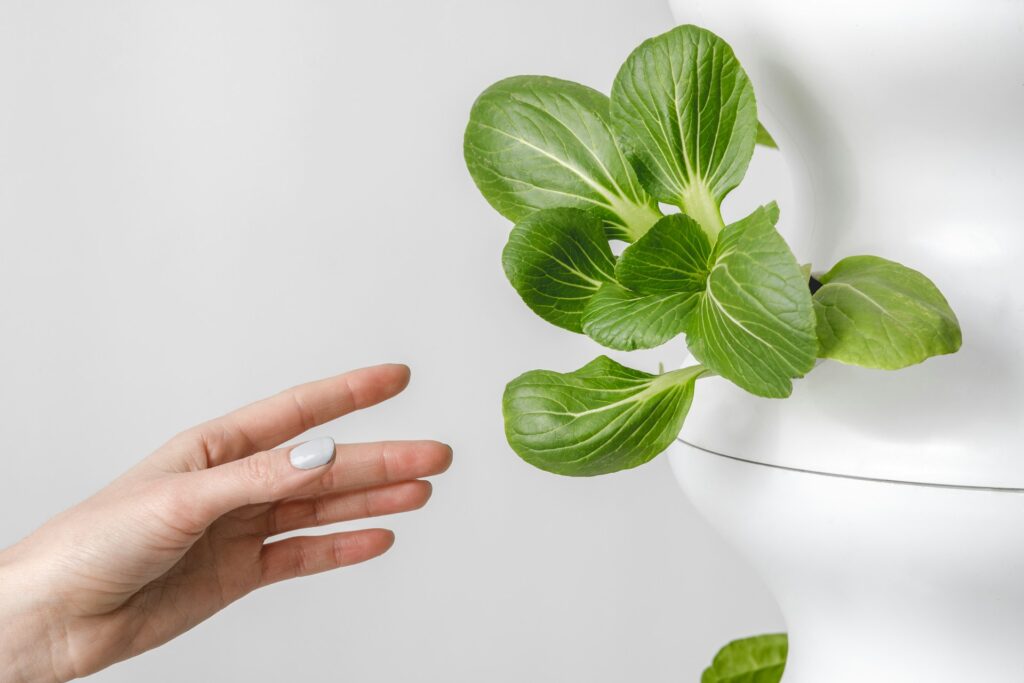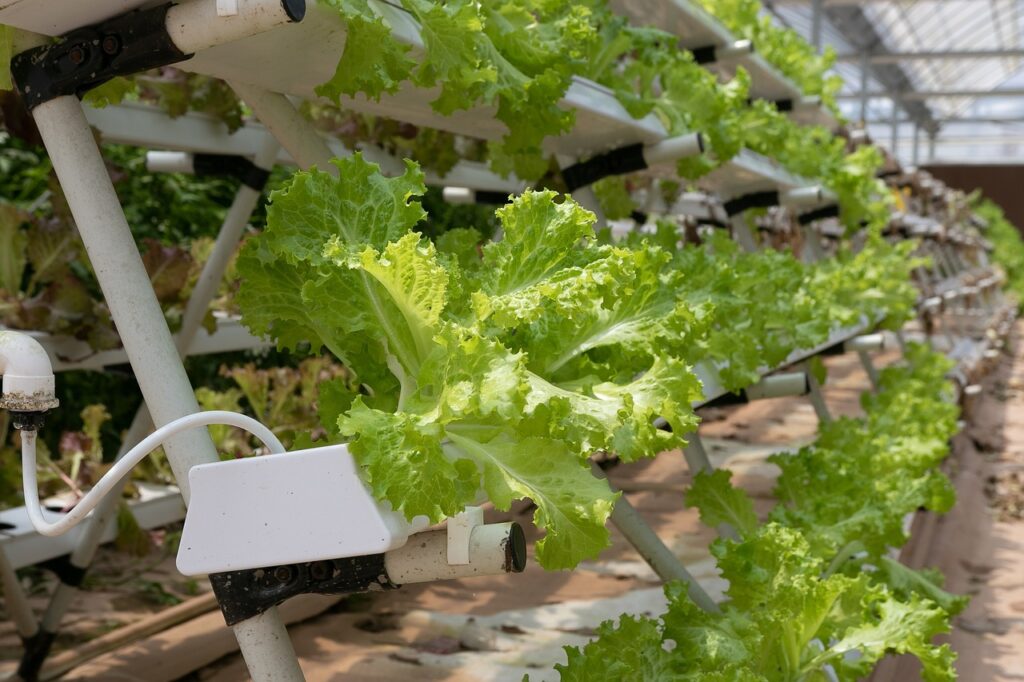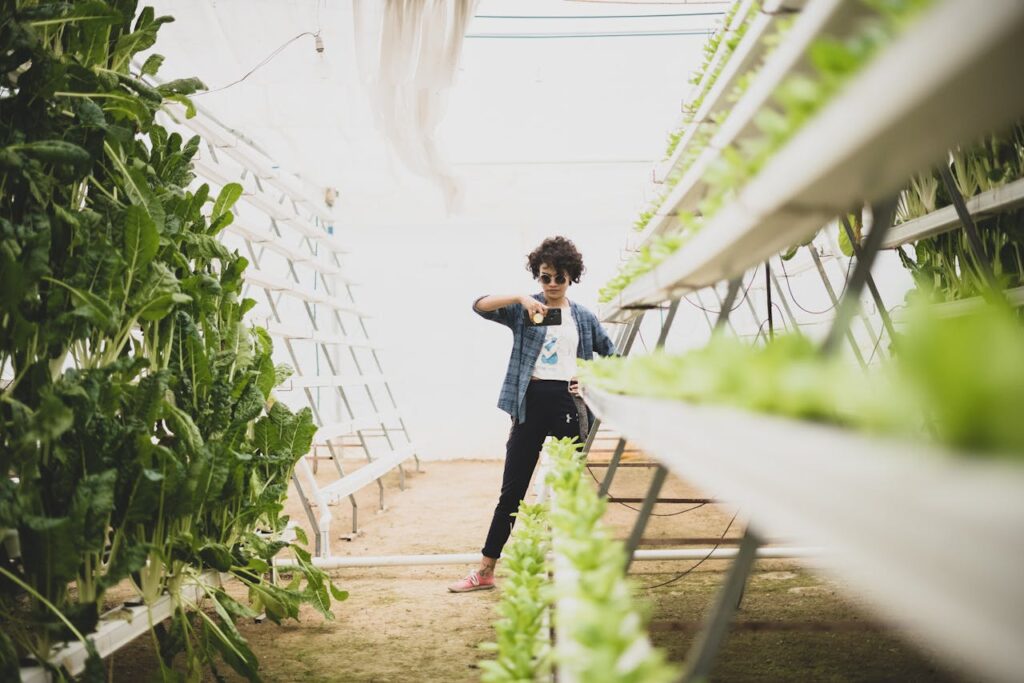Hydroponics is a suitable solution for an urban dweller who yearns for more greenery and lacks the space to cultivate a garden because it uses nutrient-rich water solutions instead of soil. As such, it suits tight quarters and indoor environments.
This article explores the basics of hydroponics, including a step-by-step guide to help you transform even the smallest nook into a thriving garden.
How to Set Up Your Hydroponic System
Hydroponics is a water-efficient practice that can use up to 90% less water than conventional gardening since the system recycles water continuously.
One of the things to consider as you start a hydroponic garden in your apartment is the location. For example, since plants need sufficient light to thrive, a spot near a window that receives plenty of natural light is ideal. If natural light is limited, you will need to consider artificial lighting.
In addition, ensure the location is spacious enough to accommodate your hydroponic system without cluttering your living area. Vertical setups can be a space-efficient solution. Further, choose a spot that is accessible to make it easy for you to monitor and maintain the system. Hence, you can set up your garden in the kitchen, balcony, or utility room.
Equipment and Materials Needed
For example, invest in grow lights if your garden is in an area without adequate natural sunlight. LED grow lights are suitable for their energy efficiency and ability to provide a full spectrum of light, which is crucial for plant growth.
Another requirement is the proper containers. These can be opaque to prevent algae growth. Algae can thrive when light penetrates the nutrient solution, competing with your plants for essential nutrients. In addition to containers, water reservoirs should be set up to store and circulate the nutrient solution that feeds the plants throughout the system.
Equally important are the pumps. An air pump keeps the water oxygenated, ensuring the roots can breathe, which is vital for their health. On the other hand, a water pump maintains the movement of the nutrient solution, helping prevent stagnation and ensuring consistent nutrient delivery to each plant.
The choice of growing medium also significantly impacts plant health. Inert options like rockwool, clay pellets, or perlite are preferred because they provide excellent support for roots without altering the nutrient composition of the solution.

Step-by-Step Guide to Setting Up a Basic Hydroponic System
As you embark on your hydroponic journey, remember each step forward offers a learning experience and the opportunity to refine your approach. Here’s a simple guide:
Step 1
Assemble the frame or stand that will support your hydroponic system. Choose a sturdy structure that can hold the weight of the water, plants, and containers. Ensure the frame is level to prevent water from pooling in any part of the system.
Step 2
Install the containers or pots that will house your plants. These should be positioned securely on or within the frame.
Step 3
Set up the water and air pumps. Position both pumps near a power source and connect them correctly to the system.
Step 4
Prepare the growing medium. Before placing it into the containers, rinse your chosen medium to remove dust or particles. This preparation helps prevent blockages in your system and ensures a clean environment for the roots to grow.
Step 5
Fill the reservoir with water and add the appropriate hydroponic nutrients. Mix the solution thoroughly and check the pH level to ensure it falls within the ideal range for your specific plants. If it doesn’t, adjust it using a PH up and down solution.
Step 6
Install the grow lights above the system if natural light is insufficient. Adjust the height and angle of the lights to cover all the plants evenly. Ensure these lights are set on a timer to mimic natural daylight cycles.
Step 7
Plant seeds or transplant your seedlings into the growing medium within each container. Ensure the roots are well-covered but not overly compacted, which could restrict growth. Further, space the plants according to their mature size to avoid overcrowding.
Step 8
Monitor and maintain your hydroponic system. For instance, check the water level daily and top up the reservoir as needed. Every few days, test the nutrient concentration and pH of the water, adjusting as required to maintain optimal growing conditions. On top of that, watch for signs of plant stress or disease and address any issues promptly.

How to Choose Plants for Your Hydroponic Garden
Here are some factors to consider and examples of plants that can thrive in hydroponic environments.
Consider Growth Characteristics
Plants with similar growth rates and nutritional requirements are ideal for hydroponic systems. Fast-growing, less demanding plants are generally easier to manage. For example, leafy greens like lettuce and spinach grow fast, making them excellent choices for beginners.
Assess Space Requirements
Choose plants that require less space to expand or ones you can train vertically. Compact herbs such as basil, mint, and cilantro are good choices, and small fruiting plants like cherry tomatoes and strawberries can also use vertical growth systems.
Evaluate Light Needs
Leafy greens and herbs generally require less intense light than fruiting plants like peppers and tomatoes, which need more intense light to produce well.
Check Water and Nutrient Requirements
Lettuce and other greens require relatively lower concentrations of nutrients, whereas fruiting vegetables like cucumbers and tomatoes need higher levels of specific nutrients, such as potassium and calcium, to support their growth and fruit production.

Consider Harvest Time and Yields
Leafy greens can provide yields relatively quickly, often within a few weeks of planting. In contrast, plants like bell peppers or tomatoes will take longer to start producing fruits but can yield multiple harvests over a longer period.
Conclusion
Hydroponics presents a dynamic and sustainable method of gardening suited for the spatial limitations and environmental concerns of modern urban living. Whether cultivating a quiet corner of greenery for relaxation or a robust garden that yields a steady supply of vegetables, hydroponics confirms the possibilities inherent in confined urban environments.
To get started, identify the type of hydroponic system that suits your space and budget. Start small to gain familiarity with the process, perhaps with a simple countertop herb garden. Educational resources, online communities, and local workshops can provide invaluable advice and support as you embark on your hydroponic journey.







